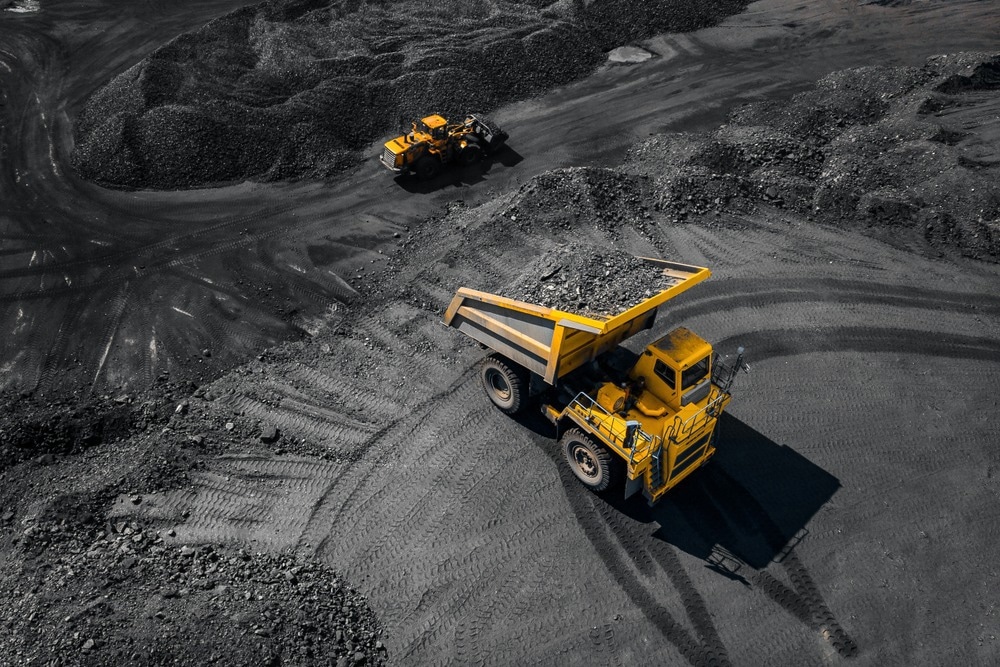In a recent article published in Scientific Reports, researchers from China delved into the complexities of airflow allocation in coal mine ventilation systems. It addresses the ongoing debate regarding whether specific roadways and ventilation structures should be assigned airflow during the design phase. The study focuses on the Guizhou Yizhong Coal Mine as a case study to analyze the calculation and distribution of air quantity in coal mine ventilation design.

Image Credit: Parilov/Shutterstock.com
Air Leakage Challenges in Coal Mines
Ventilation plays a crucial role in mine productivity, safety, and operational costs, making it essential to optimize the airflow distribution within the mine.
Air leakage through doors and ventilation structures is a common challenge that impacts the ventilation system's overall efficiency in coal mines.
The recent study highlights the varying perspectives within the industry on whether airflow should be directed to all roadways, including those with ventilation structures such as explosion-proof doors and safety exits.
Current safety regulations and criteria, such as the Safety Regulations of Coal Mine in China, provide guidelines for calculating the total air quantity required in a mine and the acceptable air velocities for different working places and roadways. While previous studies have explored energy consumption and ventilation costs in underground coal mines, there is a gap in the literature concerning the detailed calculation and distribution of air quantity during the design phase of coal mine ventilation systems.
The Current Study
The study conducted at Guizhou Yizhong Coal Mine focused on analyzing the distribution method of designed air quantity in the ventilation system. Data collection encompassed details of mine capacity, layout, and ventilation infrastructure. Air quantity requirements were meticulously calculated based on factors such as the maximum number of underground workers and compliance with safety regulations.
Distinctions were made between various roadways and ventilation structures, considering factors like length and proximity to potential gas emissions. A proposed distribution method aimed to optimize airflow allocation, with specific attention to installing regulators for long-distance roadways to control airflow effectively.
Validation of the proposed method involved simulations and airflow modeling to ensure operational efficiency. Data analysis provided insights aligned with safety regulations and industry standards, emphasizing the importance of tailored ventilation strategies for different mine areas.
The study highlighted the significance of considering worker presence, roadway characteristics, and safety requirements in designing effective ventilation systems. The research aimed to enhance ventilation performance and safety standards within the coal mine by addressing these technical details.
Results and Discussion
The analysis of the distribution method of designed air quantity in the ventilation system at Guizhou Yizhong Coal Mine yielded significant findings that have implications for optimizing airflow allocation and enhancing safety standards in underground coal mining operations.
Based on worker numbers and safety regulations, the calculated air quantity requirements provided a foundation for developing a tailored distribution method that considers the specific characteristics of different mine areas. The study identified key areas where airflow allocation plays a crucial role in maintaining optimal working conditions by differentiating roadways and ventilation structures based on length and proximity to potential gas emissions.
The proposed distribution method, which included installing regulators for long-distance roadways, aimed to optimize airflow efficiency while minimizing air leakage through ventilation structures.
Validation through simulations and airflow modeling confirmed the proposed method's effectiveness in ensuring operational efficiency and compliance with safety regulations. The analysis highlighted the importance of considering technical details, such as worker presence, roadway characteristics, and safety requirements, in designing ventilation systems that meet the unique needs of underground coal mines.
The results underscored the proposed distribution method's practical implications for mine operators and ventilation system designers, offering actionable insights for improving ventilation performance and safety standards in coal mines.
By addressing airflow distribution challenges through a systematic and tailored approach, the study enhances overall ventilation efficiency and operational safety in underground coal mining environments. The findings provide a valuable foundation for further research and practical implementation of optimized ventilation strategies in similar mining settings.
Conclusion
In conclusion, the study at Guizhou Yizhong Coal Mine provides valuable insights into the distribution method of designed air quantity in coal mine ventilation systems. By integrating safety regulations, mine layout considerations, and the specific requirements of different roadways, the researchers proposed a practical approach to airflow allocation in the ventilation design.
The findings offer actionable guidance for mine operators in planning and operating an efficient ventilation system, ultimately contributing to enhanced safety, productivity, and cost-effectiveness in coal mine operations. The study underscores the importance of tailored airflow distribution strategies to optimize ventilation performance and ensure a safe working environment for miners.
Journal Reference
Wang, Y., Pan, Q., Gao, L. et al. (2024). Analysis of distribution method of designed air quantity in coal mine ventilation—a case study. Scientific Reports 14, 10917 (2024). https://doi.org/10.1038/s41598-024-61787-9